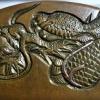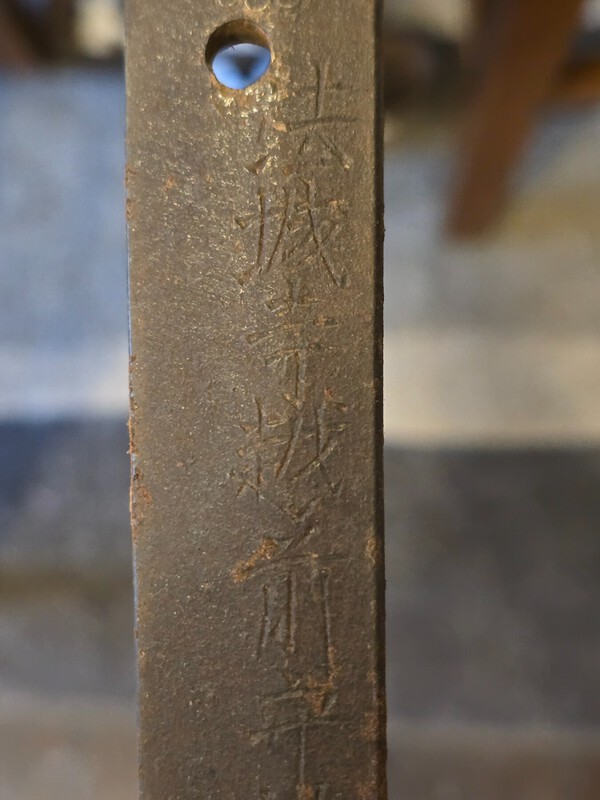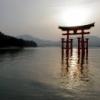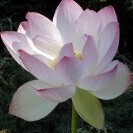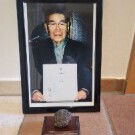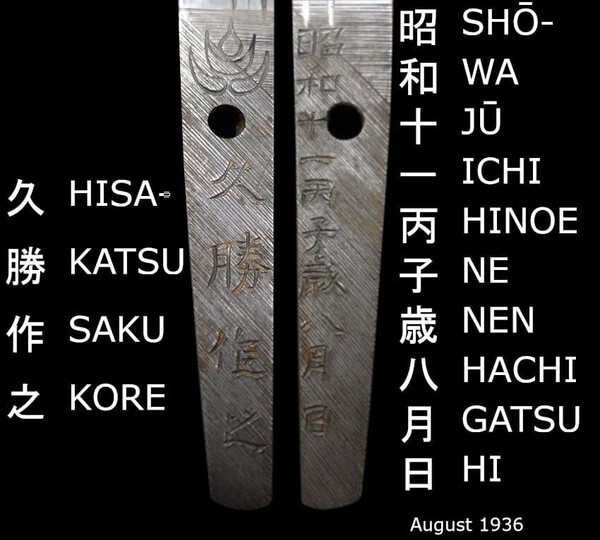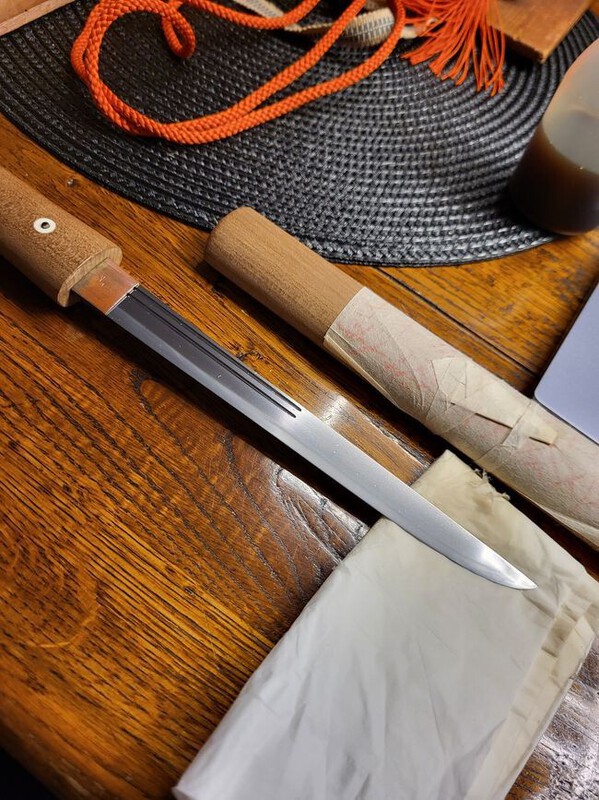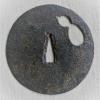Leaderboard
Popular Content
Showing content with the highest reputation on 07/13/2024 in all areas
-
Another nice and proper kabuto, Colin - one doesn't usually see fukurin and the fancy knots on this type of kabuto as Piers and Uwe have mentioned. I think eboshi are very under-appreciated (and thus undervalued). My only criticism would be the polishing and waxing...only because I like things as ubu as possible.4 points
-
As Uwe has alluded to, I see no issues with the quality of this kabuto. It is a proper, battle-worthy specimen that hasn't been tatted up. In my eyes, kabuto like this are more respectable - and harder to find - than the usual run-of-the-mill late Edo stuff that attract most collectors.4 points
-
About the “quality thing”. Last year I bought a very old Momonari-kabuto in bad condition (not that cheap as you probably might think 🥲). It is sloppily rivited together from thin scrap metal parts disguised by black lacquer. Of course low level workmanship and no artistic value. On the other hand an contemporary witness of the late Sengoku /Momoyama period and of great historical importance. A reference piece to understand the development of armor from the warring states onwards until the “peaceful” Edo period! And most important….I love it 😊4 points
-
3 points
-
富久=とみひさ= Tomihisa. Wakayama only lists two of these artists; Tobari Tomihisa, and Kuwamura Tomihisa. Wakayama doesn't mention any Tomihisa from Chōshū, so the smith who made Ian's tsuba is a slight mystery (meikan more?). 友久 (Tomohisa) and 友義 (Tomoyoshi) are different smiths altogether.3 points
-
Hojoji Echizen (no) Kami Tachibana Masateru I'm not experienced with this school but the signature looks fairly well done See reference http://www.seikeido....swords/masateru.html3 points
-
Found you another picture to look at, second down from the top. Note the type of tassel used. WW2 Japanese Army training yearbook3 points
-
2 points
-
It's possible the saya was replaced at some point due to damage. This was common during the war. John C.2 points
-
2 points
-
2 points
-
2 points
-
Understood, Colin - it was only a mild, off-handed criticism. After all, I didn't see the kabuto in the state you started with - and you're correct, the shine will fade!2 points
-
Incredibly hard to judge exactly as you say, but I am inclined to agree with Uwe here.2 points
-
Proclaimed with the usual staggering lack of self-awareness.2 points
-
Middle one is 翁. Can't make out the other two. 翁 means "old man", used (somewhat self-deprecatingly) by aged artists.2 points
-
I watched it all, but of particular interest to me was the last sections in POW camps and the family in Fukuoka, as I just completed a paper on tosho in those areas and submitted to NMB Downloads.2 points
-
2 points
-
I have to agree with Piers as well as I too like the kabuto as is. What a great find. Thanks for sharing with us "scrap" collectors. Howard Dennis2 points
-
Howard, you might have noticed that your topic inspired me to get the camera out and post my Eboshi Kabuto for comment so thank you. I will therefore expect a similar emoji because mine is a bit tatty as well. Who cares?…..the important thing is that we enjoy and learn thanks to the more generous natured members on here. Knowledge and pleasure does not depend upon £expenditure.2 points
-
Hello from the UK, hope you are all well all around the planet. The help and advice that you kindly gave Howard has prompted me to get the camera out and likewise seek your assistance. I know virtually nothing about Kabuto so please excuse my use of incorrect terminology. I bought this a while ago (together with a menpo) mostly for display because I liked its visual impact. The bowl is iron and it is in fairly rough shape. I have gently wiped and waxed it - hoping I’ve not committed any serious sin! I’d love to get your opinions on age…..and anything else you can tell me. Is the neck guard original to it? I assume it is nothing special as it was relatively inexpensive. Grateful thanks in advance. Best. Colin1 point
-
Hello everyone, I would like to share some pictures of my first nihonto because I always enjoyed photos others posted here and I have also one question about it. Mumei (attributed to Enju Kunifusa) O-ei era (1394 - 1428) nagasa 61,9 cm sori 1,36 cm weight 467 g Moto-haba cca 27 mm Saki-haba cca 16 mm It is one of the smallest katanas and definitely the lightest I have heard about, but I really like it. I am sure I could buy a more valuable sword for the same amount of money, but I absolutely don't regret it. It also came with a beautiful koshirae, although not originally made for this particular sword. I will post some photos later. I am sorry for the quality of photos, I used my cellphone. Best regards Jan L.1 point
-
1 point
-
Latest PM from Yojimbo: for you , must have : https://page.auction.../auction/r1144323342 I can't believe the arrogance of this guy!! Brings to mind a quote sometimes attributed to Mark Twain something like it is better to let the world think you a fool than to open your mouth and remove all doubt! Howard Dennis1 point
-
My success rate for receiving items shipped from Japan to the US is 85% over the past two years. About one year ago a Tanto was last seen "EMS submitted to US Customs" (JFK). US Customs said they never received it. After a lot of finger pointing, EMS paid the claim (to the seller, not to me). It was a hassle, and seller wasn't helpful at all. Never bought from his shop again. Second item was a nice Koshirae pole for a Naginata, shipped via FedEx. It was last seen "arrival scan Nashville." FedEx said it must have been lost in their warehouse, FedEx paid the insurance claim (to the seller), which was only for a fraction of replacement cost. My takeaways, 1) use well-established dealers only, 2) make sure the insurance value is US replacement cost, 3) pay with credit card so if necessary you can dispute charge (for example, seller keeps your payment, and also keeps insurance payment for an item you never received).1 point
-
That's a really unusual piece. The barrel appears massive in relation to the bore but seems ok made apart from the screw hole on the barrel tang which is not centered, The rest of it seems quite crude, with regards the lock, stock and trigger mechanism. Not convinced its that old. Its all put together as mentioned but im thinking the stock was put together for that barrel and not from something else. I say that because of the size of the barrel for a pistol. Just look at the height the stock has to be for it to match the tang on the top of the barrel, cant see any other pistol with a need for a stock like that ? Lock appears as though its converted from flintlock but don't look so old. No trigger guard. Elements of it remind me of something put together in India for tourists, maybe that what it is? Oddball, but kind of like it in a way because its an oddball with a big barrel.1 point
-
1 point
-
Nice! Much nicer than in Aoi images. Usually they are good, but their light is more to a side which exaggerates "roughness". It has much more classic Yamato feeling... Can be earlier.1 point
-
Thanks John. Usually I would totally agree…..leave it alone…..but the bowl was very dirty with a slight bloom (almost a surface mould) in places so it just had a wipe with a slightly damp soapy piece of soft paper towel, dried and then a light coat of of Antiquax. Didn’t touch the neck guard. The shine will die down! Appreciate your comments. All the best. Colin1 point
-
Thanks again @uwe Edo is fine by me …..glad it isn’t a Showa repro! Appreciate your time, very kind of you. All the best.Colin1 point
-
Hello Colin, sorry for my prolonged silence! Dating masks, especially hanpō, is generally not that easy. Very little is written about the subject and most sources simply stating “Edo period” or similar, without further explanations (I know only one comprehensive book dedicated to mengu). The problem is, that you can find such hanpō in almost identical shape in the early as well as in the late Edo period. The difference is often workmanship among other small details. However, I dare say early Edo!1 point
-
1 point
-
1 point
-
Very true, bit harrowing in places after I watched all of it. It's a shame they didn't go a bit more into the sword itself, bit of a missed opportunity. Found myself telling the lady on tv off for touching the blade too! 🤣1 point
-
As Uwe says above, the cords need to be long for actual wear. They cross over under the jaw, hook through the opposite ear loops, tie in a reef knot on your chin, then ‘work their way’ back through the strings (shinobi-no-o from the verb Shinobu to creep like a ninja) and are tied off in a large knot behind your neck. Nice fukurin edging around the fukikaeshi and mabisashi. There is a famous gold eboshi kabuto worn I think at the battle of Kawanakajima (might be wrong on that) with a musket ball hole right through the top flat fin section.1 point
-
Good show, quite disturbing in places. Very little to do with the sword itself...maybe a few minutes in total. But worth a watch. I suspect it was just surrendered as per normal instead of the "given to him because he saved his life" which is better on film. But ok... Never go into who made the sword, I suspect just a regular Showato.1 point
-
1 point
-
Not really. While not absolutely full proof, the securest way to ship a sword in the U.S. has always been via USPS registered mail. Why? It's because the package first of all must be wrapped according to standard, so that all seams can be stamped with a seal to deter tampering. Next, the package then travels under lock and key the entire way and must be signed for by everyone that handles that package in addition to being tracked the entire trip. The package must be signed for at the time of delivery. Travel time is considerably longer (and it costs much more) than it used to be now that Trump appointed and Biden kept De Joy who is running things. None the less, it is, or at least was, the safest/secure way to ship. The second safest way to ship a sword is/was via overnight USPS Express mail when it is guaranteed to arrive the next day by a given time. Why? The package is tracked and must be signed for, and it doesn't sit around waiting for prying eyes. Each post office has a cutoff time for express mail. If one arrives ready to go just before that cutoff time that also ensures the package isn't sitting around for long. Do not ship the package if next day isn't guaranteed. Again, nothing is full proof. Regards1 point
-
Hi Colin, before you give it into Piers care let me say it’s a rather nice “烏帽子形兜” (Eboshi nari kabuto, helmet in shape of a cap, worn by cord nobels). The flaring out hineno shikoro seems original (made for this helmet) to the helmet and is nicely attached with this cool knots. When it comes to the age I still have to made up my mind and will come back later…1 point
-
1 point
-
Send him/her the bill for a polish, and collect payment first, before killing them.1 point
-
First help is to kill the guest who caused the stain. Just as a prevention measure.1 point
-
I did not meet Tsuruta-san, unfortunately. There were two younger people working there (I did not get their names). The woman was busy packing boxes for shipping and answering the phone. The man helped me, spoke decent English, and was nice, although he wasn’t as knowledgable as the woman and asked her for information several times. I liked that he was accessible for questions but he did not stand over me or rush me as I examined the swords. Aoi is also a fairly small shop (and a bit cluttered) with a seating area for examination and a few display cases with swords. Most of the inventory is in a storage room. I had previously told them the three swords I would like to see. Those three were out of the shirasaya and waiting for me to view on my arrival. The man also provided me with an iPad that already had the Aoi listings for the three swords. They were well prepared for my appointment. The others I visited: Japan Sword was tidy and had several American tourists in it. It was bigger in size than Aoi and Yamashiroya. I did not ask to view anything there. The salesperson was speaking good English to the tourists. Ginza Seikodo is very small but tidy, with few swords on display. Unfortunately, Saito-san was not there, and I did not ask to view anything. Ginza Seiyudo was about the same size as Japan Sword. You ring a bell to be let in, and they have signs stating the store isn’t for browsing. There was one sword I specifically asked to see. A younger man took me to a private viewing room in the back and let me examine it. He also showed me a couple of other swords they thought I might like. It was very professional feeling, and he spoke decent English. I only had one day allocated for sword shopping. With the stores being spread out around the city, and my desire to see specific swords at Aoi, Yamashiroya, and Seiyudo, I unfortunately had to limit the number of other stores I could visit and limit my time in each store.1 point
-
1 point
-
Brian: You will hear that Ebay is a minefield and to stay away, however it's worth noting that many of our trusted sellers also sell on Ebay! So, on any site, be patient and look at every aspect of the sword without reading the description first (it's probably salesman crap anyway). For example, many listings will say "samurai" when describing a WW1 or WW2 sword or use the term "pilot tanto" or "suicide knife", all of which are used to attract buyers but are wholly inaccurate. Study condition issues and know what to look for (kizu, higare, etc.) then study the blade carefully. Look for recent NTHK or NBTHK papers. Don't necessarily shy away from mumei blades; they are often cheaper because they don't have a name, gimei or otherwise, associated with them. Are there dealers to avoid? Yes. You can find many of them discussed on this site. Lastly, as others have said, there are no diamonds in the rough. Sword sellers know what they have and know what they are worth. If a sword seller is giving an amazing deal, there's a reason for it. You just need to understand 1) why is it so cheap, and 2) is it acceptable to me. John C.1 point
-
Bear in mind that Nagayama's book is very general and that there are always variations, sometimes even within a single school. A flaw is and remains a flaw, and the argument that it's common in koto is just a sales pitch.1 point
-
Thanks, Oli. This is not a price or value issue. The auction winner got the sword for cheap; that’s a fact. Lucky him. I paid much more than that, of course, as I purchased the sword in Europe, where we owe VAT and import duties, plus the profit of the Dutch dealer I bought the blade from… Japanese sellers I wrote to were reluctant to dealing with a bloke from Romania. The politely said “no”… I live in the “wild Eastern Europe”, so I guess I can’t blame them for distrusting me. So, what I paid is not relevant right now. It’s not a question of buyer’s remorse, as I obviously didn’t expect a flawless Juyo for that kind of money. I simply want to learn more about the sword as it is, with all its ups and downs that are part of its story (and history). Actually, I’m glad it has a few minor nicks on the mune, which I like to think are battle marks. All flaws add to the character of a weapon that was forged before the peaceful Edo period. That’s exactly why I was looking for a koto, even if it’s not “artistically” perfect. Kitae-ware, on the other hand, are forging flaws, as I understand, so I want to know more about them and aboult how they can hurt, not the value, but the potential “wothiness” of a blade. Even if I’d never use this sword, in any scenario, it feels good to know that, in case “I had to” go out cutting things with it, it wouldn’t break.1 point
-
Bruce, that hamon pattern closer to the machi is just fairly distinctive for Nagamitsu and Emura. Not to say there aren't many other smiths out there similar, but it's a good clue. As you mentioned, hard to say when exactly. But 1943/1944 would be a good guess. Emura had many apprentices/prisoners helping him work, and often signing, hence the wide range of signatures. But either way, it's considered his work, and a good find. Since you got it cheap, I would spring for a shirasaya and display it with the fitings in tsunagi to show its lineage. The mounts would cost too much to fix up. Oil, wipe, and a bit of careful uchiko, and the blade will look much better.1 point
-
Many of you are looking at it as an item of militaria....to those who collect Nihonto, the blade is worth the gamble. Anything extra like genuine fittings etc are a bonus. I'd have paid that just for the bare blade with habaki. It has that feel of a Nagamitsu or Emura to me. There are very different approaches from the Nihonto and military collectors. If it turns out to be a semi decent Gendaito, you could just put it into shirasaya, clean it a bit, and have a piece worth $1000+1 point
-
Hello Jake, 次兵衛 is just a name: Jibei. In this case, you shouldn't try to parse each kanji for its individual meaning. The three kanji are combined together to form the name Jibei. If course, the individual kanji have meanings, and these meanings, in turn, add to the understanding of the name. But Jibei (次兵衛) is just a masculine name, that when combined with Dōtanuki means "Jibei of the Dōtanuki Group", and we know this because there are written records of Jibei of the Dōtanuki Group. It is this last character 丞 that is causing us to speculate. Typically it is an honorific title of the kind that local Daimyō or the central government would grant to very talented smiths. It would make the whole name into something like "His Lordship Jibei of the Dōtanuki Group", and would be pronounced Jibei-no-jō. However, these titles are usually well-documented in various sources. The smith is then free to use this title on all of his signatures. In the case of Dōtanuki Jibei, there seems to be no record of him ever receiving the honor of a title, and there are no other swords of his that are extant with that particular title on it (as far as I know). So we are kind of scratching our heads as to what this last kanji could mean. It could be that the record of him receiving the title just didn't survive in any written form. It could be that this isn't a title, but instead means something else that isn't yet apparent. In any event, none of this changes the quality of your sword, and none of this changes the NBTHK's judgment that your sword is indeed a sword made and signed by Jibei Dōtanuki.1 point
This leaderboard is set to Johannesburg/GMT+02:00


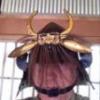
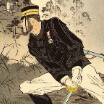












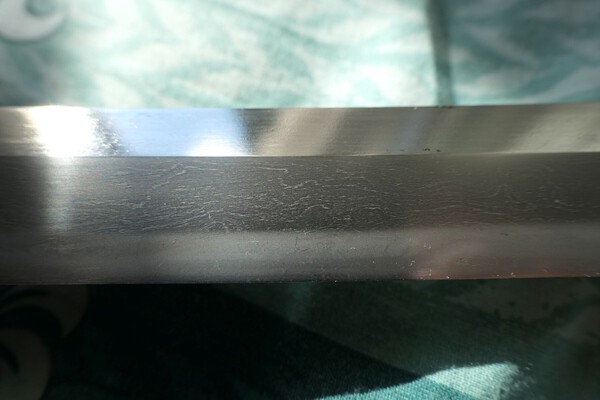






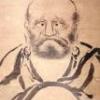
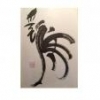












(1)0101.thumb.jpg.0a3c817344e9975481a871b943d5339b.jpg)
(1)0102.thumb.jpg.7d81691088945d6fd076b890a9c16fed.jpg)
01.thumb.jpg.55976ce26a4fa5eece05a85eb4cf60bd.jpg)
0101.thumb.jpg.f3edfe5e6201503d90c10b0045b5eb41.jpg)

01.thumb.jpg.c4dbd3341ae12341c7bcad7d49627681.jpg)





